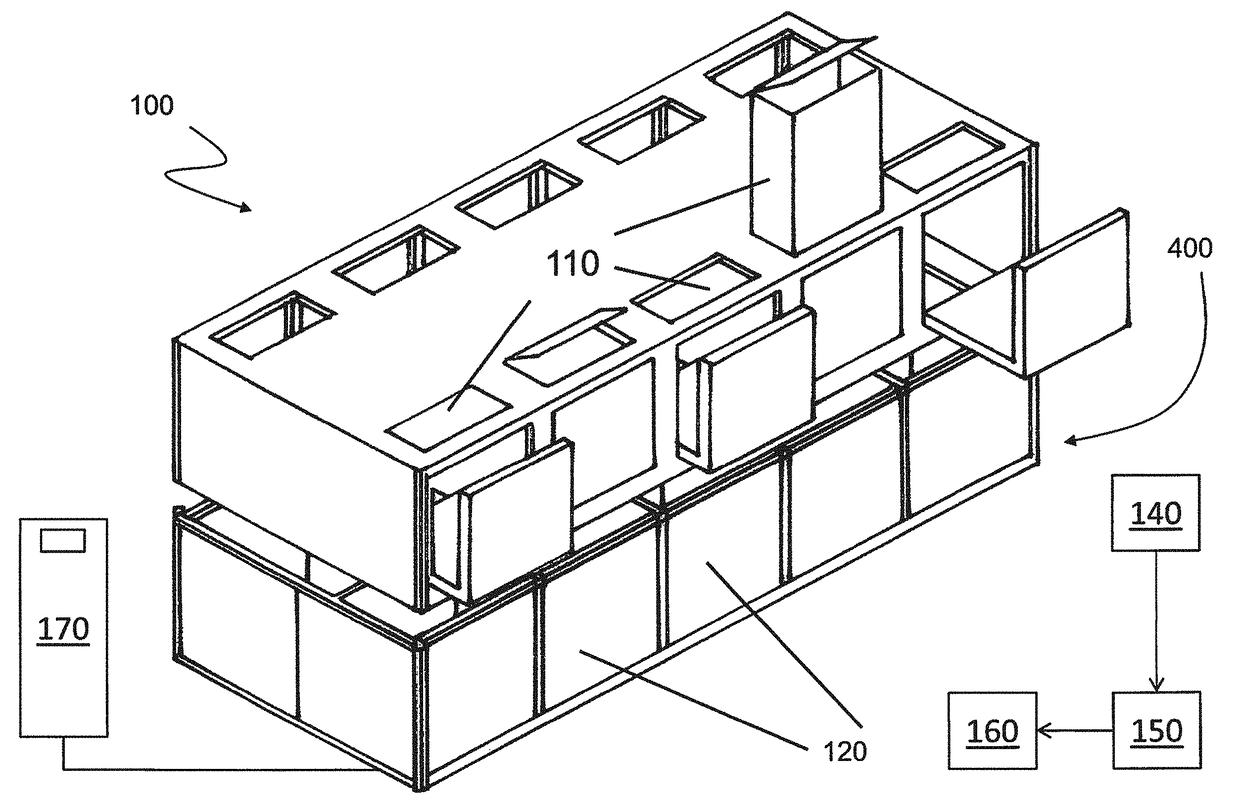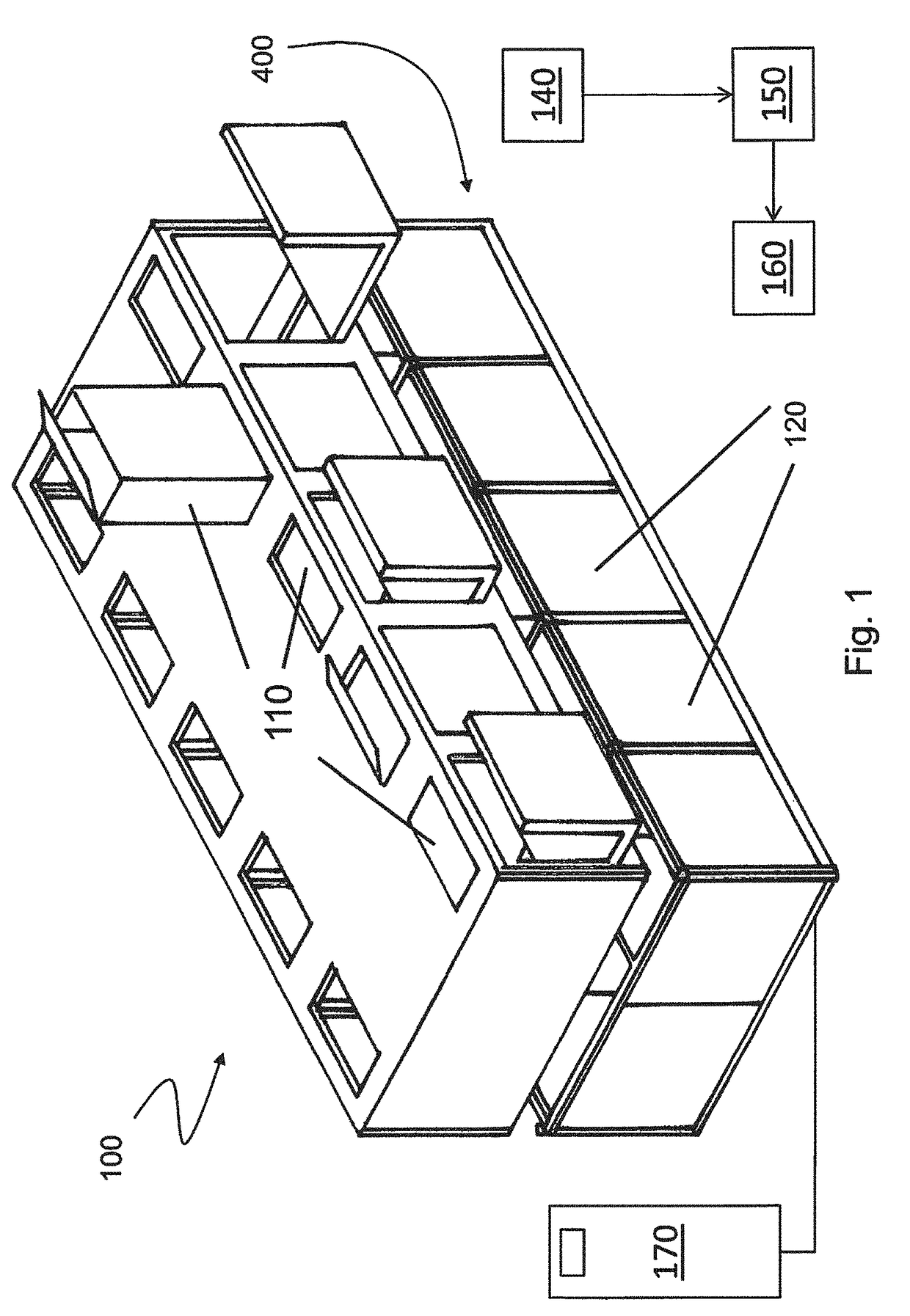Dynamic movable integrated system for waste collection
a waste collection and integrated system technology, applied in the field of waste, can solve the problems of low compaction percentage, waste traceability, inefficient current system, and low efficiency of waste collection,
- Summary
- Abstract
- Description
- Claims
- Application Information
AI Technical Summary
Benefits of technology
Problems solved by technology
Method used
Image
Examples
Embodiment Construction
[0032]With reference to the enclosed figures, reference number 100 overall indicates a movable integrated system for waste collection.
[0033]The system 100 comprises a container structure adapted to be installed above ground, which comprises a plurality of access doors 110 to a plurality of collection containers 120 contained in the structure itself, in a manner such that each access door accesses a specific collection container.
[0034]In detail, the access doors 110 are opened onto an area reserved for the compaction of waste, where compaction means 130 provide for compacting waste, before transferring such waste into the respective collection container 120.
[0035]The compaction means 130 are installed in modules that can be independently extracted with respect to each other. This advantageously allows being able to easily substitute the compaction means 130 in case of failure, or a complete substitution thereof with increasingly innovative solutions, in accordance with the type of wa...
PUM
 Login to View More
Login to View More Abstract
Description
Claims
Application Information
 Login to View More
Login to View More - R&D
- Intellectual Property
- Life Sciences
- Materials
- Tech Scout
- Unparalleled Data Quality
- Higher Quality Content
- 60% Fewer Hallucinations
Browse by: Latest US Patents, China's latest patents, Technical Efficacy Thesaurus, Application Domain, Technology Topic, Popular Technical Reports.
© 2025 PatSnap. All rights reserved.Legal|Privacy policy|Modern Slavery Act Transparency Statement|Sitemap|About US| Contact US: help@patsnap.com



